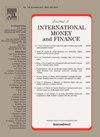U.S.-China trade frictions and supply chain reconstruction: Perspective from indirect links
IF 3.3
2区 经济学
Q2 BUSINESS, FINANCE
引用次数: 0
Abstract
Building on the theoretical discussions, the paper empirically investigates how U.S.-China trade frictions impact the supply chain through the perspective of indirect links. It utilizes data of U.S. listed firms from 2014 to 2022 and employs a difference-in-differences model for analysis. The baseline estimation finds that U.S. firms tend to establish supply chain relations with third country firms deeply integrated into Chinese supply chain after 2018. Mechanism analysis shows that after trade frictions occur, U.S. firms choose to maintain indirect supply chain connections with China through third countries based on considerations of procedural costs, financial costs, and relational costs. Heterogeneity analysis indicates that U.S. firms in industries directly affected by trade frictions or in industries where China has supply chain advantages are inclined to make such adjustments, tending to engage in indirect cooperation with Chinese firms through third-country firms that have pre-existing supply chain collaborations with Chinese firms. Extended analysis examines the supply chain adjustments of other countries or regions after the trade frictions. We find that Chinese firms increase their supply chain connections with third countries and increase green-field investment in these countries. U.S. allies also adjust their supply chains like the U.S., while non-U.S. allies do not make any adjustments. Hence, the paper believes that the “decoupling” strategy may be difficult to achieve, and trade restrictions only lead to U.S. firms maintaining indirect relations with China through third countries.
中美贸易摩擦与供应链重构:间接环节视角
在理论讨论的基础上,本文从间接环节的角度实证考察了中美贸易摩擦对供应链的影响。本文采用2014 - 2022年美国上市公司的数据,采用差分中的差分模型进行分析。基线估计发现,2018年后,美国企业倾向于与深度融入中国供应链的第三国企业建立供应链关系。机制分析表明,贸易摩擦发生后,美国企业基于程序成本、财务成本和关系成本的考虑,选择通过第三国与中国保持间接供应链联系。异质性分析表明,直接受贸易摩擦影响的行业或中国具有供应链优势的行业的美国企业倾向于进行这种调整,倾向于通过与中国企业已有供应链合作的第三国企业与中国企业进行间接合作。延伸分析考察了贸易摩擦后其他国家或地区的供应链调整。我们发现,中国企业增加了与第三国的供应链联系,并增加了在这些国家的绿地投资。美国的盟友也像美国一样调整供应链,而非美国。盟国不做任何调整。因此,本文认为“脱钩”战略可能难以实现,贸易限制只会导致美国企业通过第三国与中国保持间接关系。
本文章由计算机程序翻译,如有差异,请以英文原文为准。
求助全文
约1分钟内获得全文
求助全文
来源期刊

Journal of International Money and Finance
BUSINESS, FINANCE-
CiteScore
4.20
自引率
4.00%
发文量
141
期刊介绍:
Since its launch in 1982, Journal of International Money and Finance has built up a solid reputation as a high quality scholarly journal devoted to theoretical and empirical research in the fields of international monetary economics, international finance, and the rapidly developing overlap area between the two. Researchers in these areas, and financial market professionals too, pay attention to the articles that the journal publishes. Authors published in the journal are in the forefront of scholarly research on exchange rate behaviour, foreign exchange options, international capital markets, international monetary and fiscal policy, international transmission and related questions.
 求助内容:
求助内容: 应助结果提醒方式:
应助结果提醒方式:


